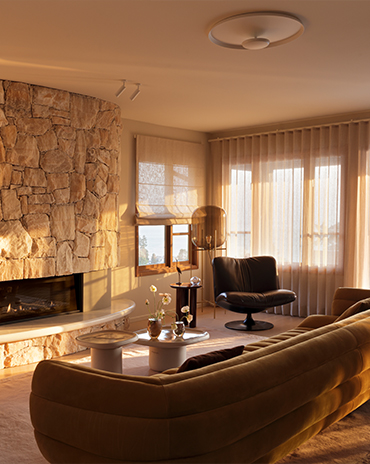Copyright © 2025 Motivate Media Group. All rights reserved.
Zen Spaces was designed by Sanjay Puri Architects as a biophilic space with volume and light
Zen Spaces is a composition of cuboid volumes punctuated with an open courtyard
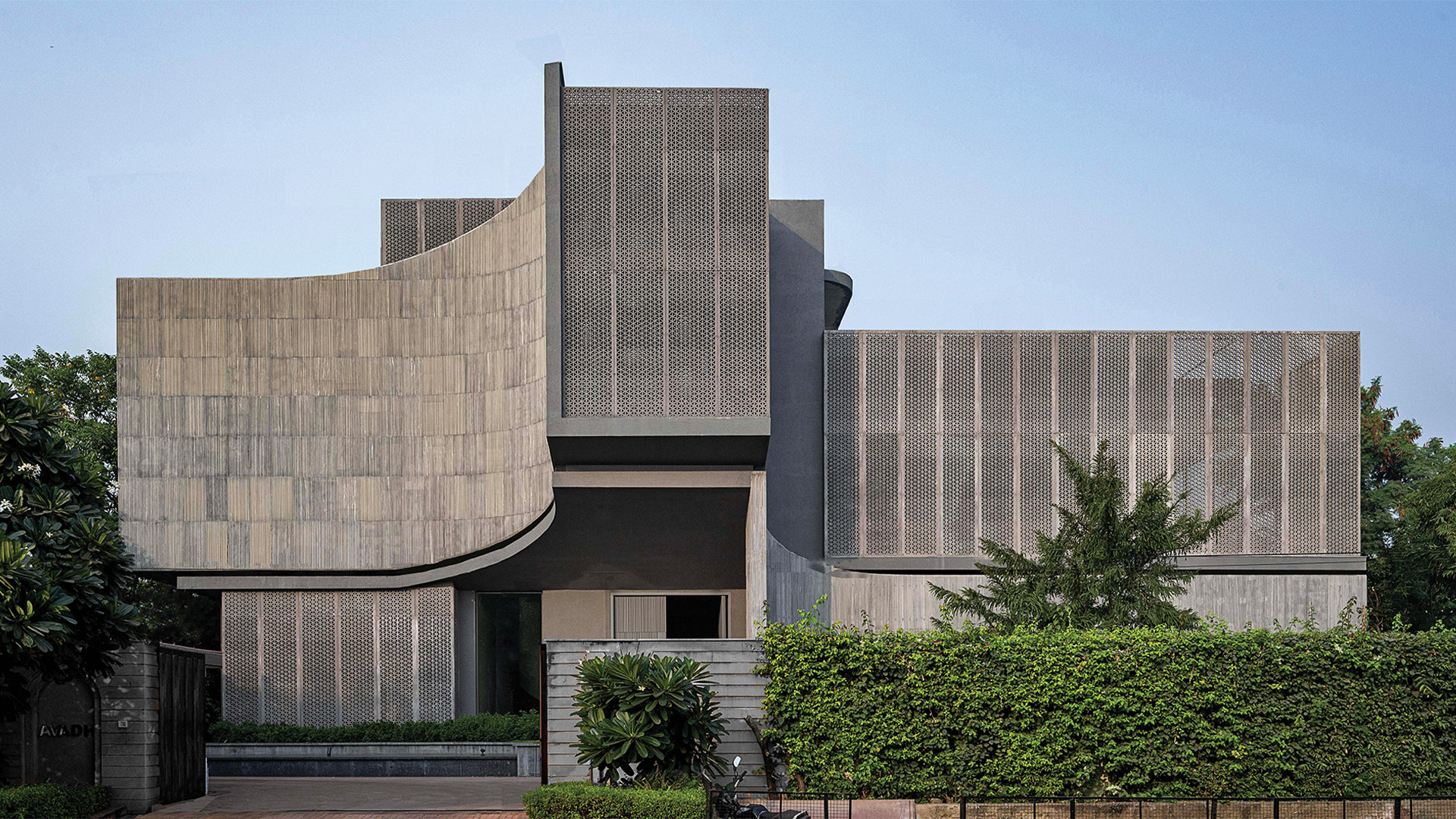
Sanjay Puri Architects designed Zen Spaces as a four-level, 27,000-square foot home located in Jaipur, Rajasthan, India. Blurring the lines between inside and outside, Zen Spaces integrates with the existing landscape, screening and allowing filtered light to enter each space in different ways, infusing volumes with light and shadows to transform them in different ways at different times. The property is situated on a relatively large plot, with an existing house on the southern side, and the clients wanted a new house since the family had grown larger. Most of the existing garden has been retained as a common space for both houses, and the new home is built on the extreme northern end, with roads on three sides. All existing trees on the site were retained, with the new house ensconced in the clear space between them. The house is a composition of cuboid volumes punctuated with an open courtyard, built on four levels to accommodate three generations living together.
A subterranean level, lit naturally by a sunken courtyard, houses a large lounge, a gym and service areas. The ground floor and the first floor have living and dining spaces, with three bedrooms and a small lounge located on each level. The second floor features a multipurpose room that opens onto a large north-facing terrace.

Eighty per cent of the furniture was custom-made on site by local contract carpenters
The circulation spine within the house skirts the courtyard, allowing a visual connection to the landscaped spaces wherever anyone is within the house. Each part of the house is naturally lit, with diffused indirect sunlight permeating the inner volumes. Jaipur city has eight months of summer where temperatures can be in excess of 35°C, and four months of winter with temperatures averaging between 12 and 21°C.
The house is punctuated by a winter deck on the southern side facing the large garden, and a linear summer deck fronting the main living and dining spaces on the northern end. The two decks provide sheltered outdoor seating, usable throughout the year and ideal for family gatherings. In addition, each room opens onto its own private outdoor deck, balcony or terrace, providing individual open spaces for everyone in the house. These outdoor decks provide shelter from the excessive heat of the summer months, while keeping the inner spaces cooler. The summer decks look out towards the large garden, and the winter deck looks out towards large trees, with each of the individual room decks opening out onto a mix of bamboo and other trees. To reduce the heat gain of the summer months, and to simultaneously provide privacy and reduce noise from the arterial road the house fronts, a series of GFRC screens sheath the east, west and south sides, with the north side more open. These screens allude to the stone screens of traditional architecture of Jaipur city, and of Rajasthan.
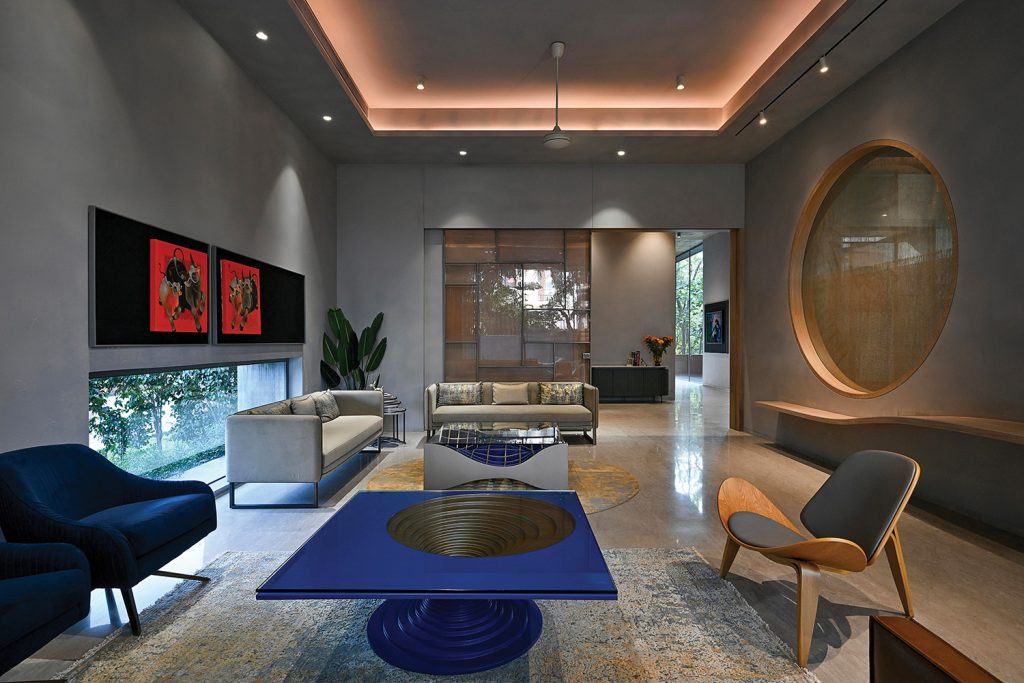
Naturally ventilated living room
The house has a simple RCC structure frame, with all walls made in fly ash bricks, and incorporates water recycling, rainwater harvesting and a solar water heating system. The house was built by local contract labour from the vicinity, and most materials used in its construction were procured within a 100-kilometre radius. Every part of the house is naturally ventilated, with the courtyard contributing to passive cooling. The interior palette is predominantly neutral in shades of grey, with accents in the form of art and furniture. Eighty per cent of the furniture was custom-made on site by local contract carpenters, and is constructed of Indowud, a rice husk eco-friendly wood substitute. Lime plaster from local craftsman is used on all of the walls, reducing cement usage to a minimum.
In most areas of the house, the ceiling is left as exposed concrete. A small prayer room forms a focal point along the circulation spine. This room, called a ‘pooja room’, is a small temple within the house, and a quintessential part of most Indian homes. As all Hindu temples have a bell at the entrance, the prayer room in the house is adorned with a series of small bells in concentric circles of diminishing height, forming a dome shape, echoing the traditional temple.
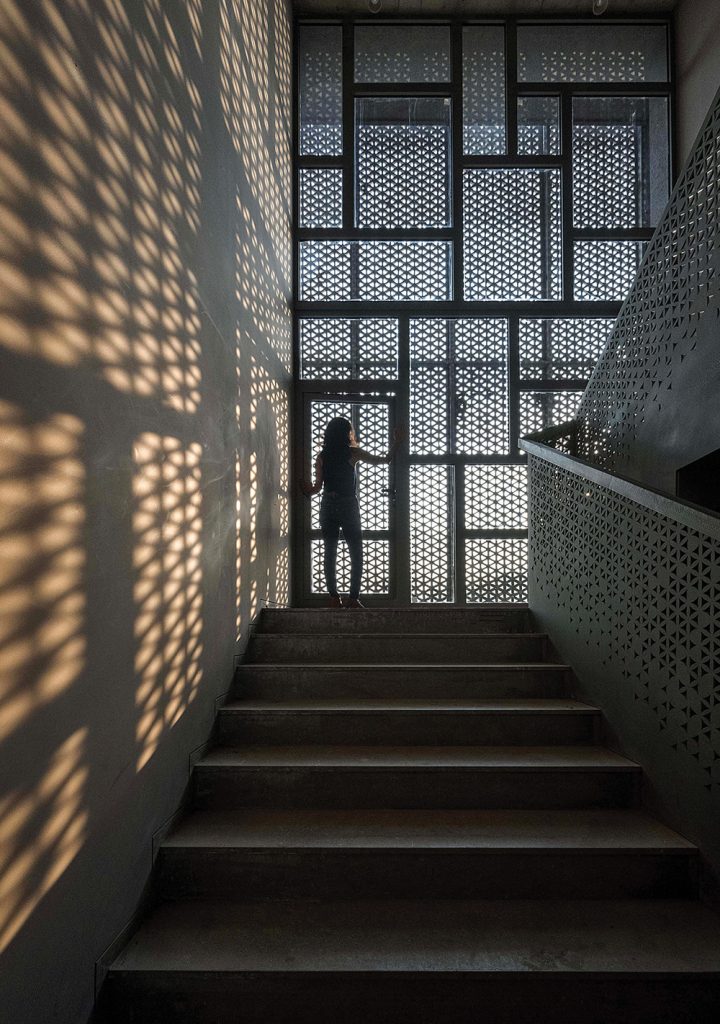
Solid and perforated volumes
There are varying degrees of transparency throughout the inner spaces, with each of the living, lounge, dining, outdoor and circulation spaces seamlessly integrated. Spaces are visible to an extent, allowing for a more spatial experience, and yet simultaneously private. At night, the house lights up in parts, displaying its solid and perforated volumes, juxtaposed together in a sculptural way. The design of the house, with its courtyard, screens, indirect natural light and complete natural ventilation, makes it extremely energy efficient. Contextual to the site location and the climate of the region, Zen Spaces is a home offering different experiences in each of its parts, seamlessly interspersed with nature.
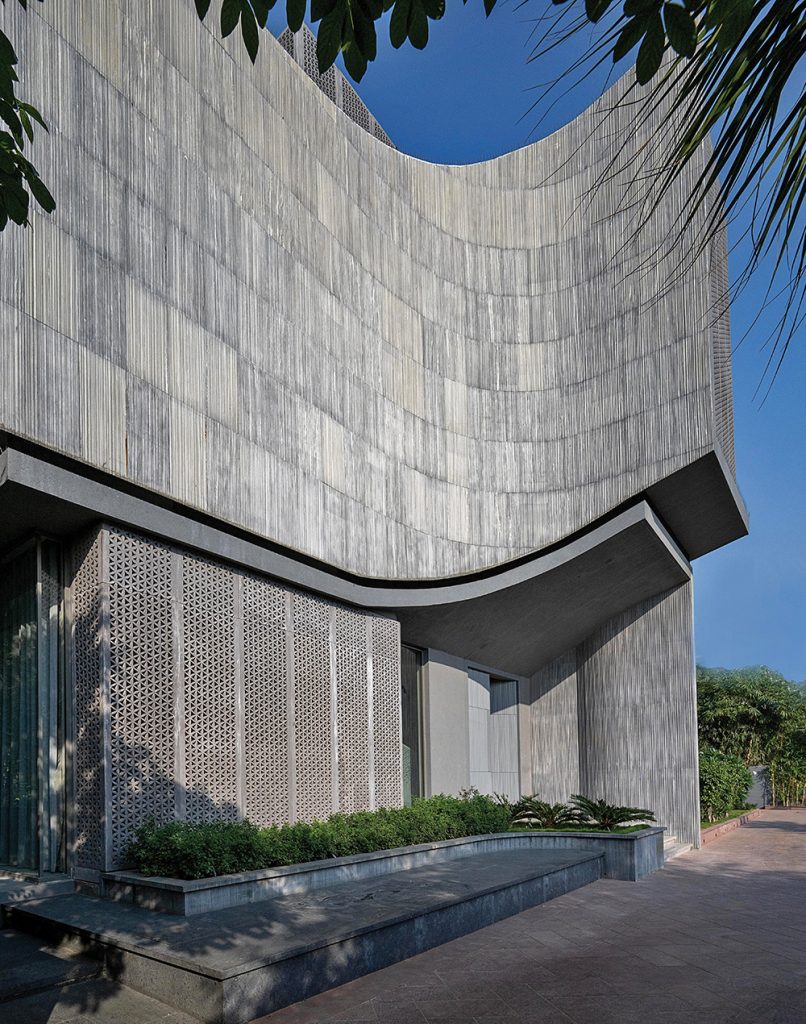
All walls made in fly ash bricks
Technical sheet
Project name: Zen Spaces
Location: Jaipur, Rajasthan, India
Start date: May 2020
Completion date: November 2023
Gross floor area: 27,000 sq.ft
Cost: US$ 1,801,500
Architect: Sanjay Puri Architects
Lead architect: Arch. Sanjay Puri
Associate architects: Arch.Madhavi Belsare, Arch.Ishveen Bhasin
Design team: Arjun Gupta, Vibha Alat
Photography by Dinesh Mehta
The Latest
Highlights of the Biennale Architettura 2025
We shine a light on the pavilions from the Arab world at the Venice Architecture Biennale, on display until Sunday 23 November 2025
Read ‘Bold Design’ – Note from the editor – July/August 2025
Read identity magazine's July/August 2025 edition on ISSUU or grab your copy at the newsstands.
Things to Covet in June 2025
Elevate your spaces with a pop of colour through these unique pieces
Designing Spaces with Purpose and Passion
We interview Andrea Savage from A Life By Design – Living & Branding on creating aesthetically beautiful and deeply functional spaces
Craft and Finesse
EMKAY delivers a bold and intricate fit-out by transforming a 1,800 sqm space into SUSHISAMBA Abu Dhabi, a vibrant multi-level dining experience
An Impressive Entrance
The Synua Wall System by Oikos offers modularity and style
Drifting into Summer
Perennials unveils the Sun Kissed collection for 2025
The Fold
Architect Rabih Geha’s collaboration with Iwan Maktabi
From Floorplans to Foodscapes
For Ayesha Erkin, architecture was never just about buildings, but about how people live, eat, gather and remember
Between Sea and Sky
Cycladic heritage, heartfelt hospitality and contemporary design converge on Deos Mykonos, designed by GM Architects
A Fresh Take on ’70s Style
Curved shapes and colourful artworks bring vibrancy to this contemporary home with mesmerising nature views
















